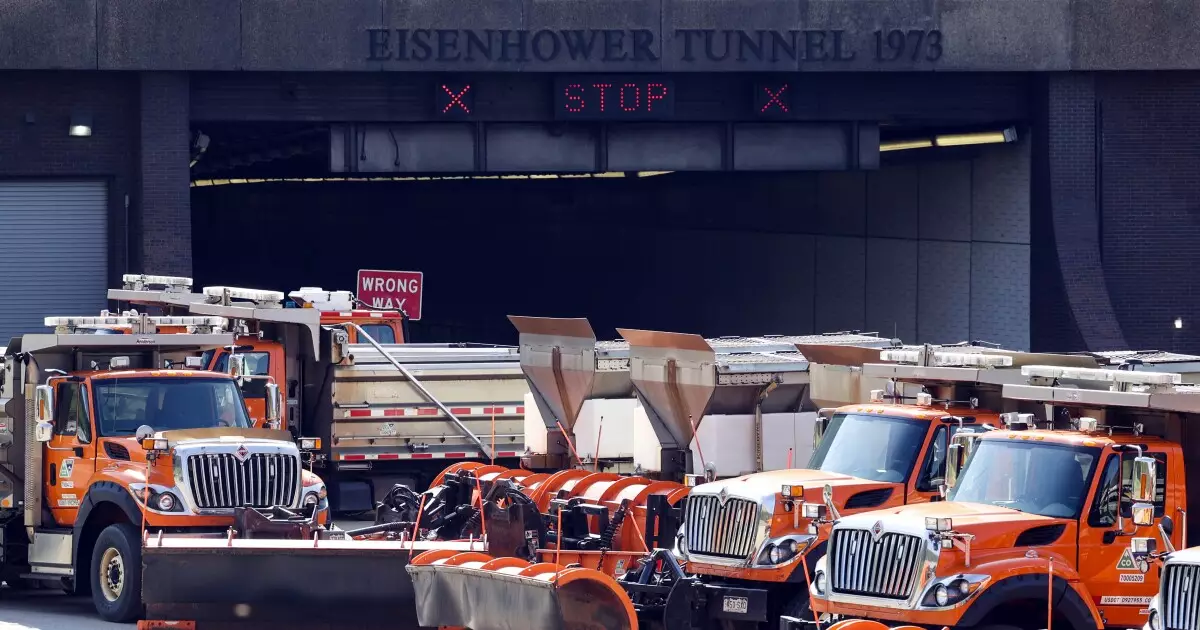In a significant move signaling both optimism and controversy, Colorado’s Statewide Bridge and Tunnel Enterprise (BTE) has announced plans to issue $212.45 million in insured revenue bonds. As the state grapples with fiscal challenges and extends its infrastructure capabilities, this endeavor could either set a precedent for future financial maneuvers or uncover the deep-seated flaws of current fiscal policies. The issuance comes amidst gains in bond ratings and the specter of ongoing litigation over an essential element of state revenue—the Taxpayer’s Bill of Rights (TABOR). This situation reflects a pressing reality for Coloradans: the balance of progress and fiscal responsibility is a delicate thread that requires careful navigation.
The Role of TABOR and the Quest for Infrastructure Funding
TABOR stands as a guardian against unchecked taxation in Colorado, a double-edged sword that limits state revenue while seeking to empower voters. Yet, this constitutional amendment is increasingly viewed as an anchor, hindering necessary advancements. Critics, including the plaintiffs in the ongoing lawsuit initiated by Americans for Prosperity, argue that the state’s efforts to bypass TABOR restrictions through strategic “fees” rather than outright taxes is a concerning ploy. They contend this undermines democracy by sidestepping voter consent.
In this bond issuance, the reliance on bridge safety surcharges—a fee varying between $13 and $32 on vehicle registrations depending on weight—illustrates how the BTE aims to generate revenue without increasing taxes. However, this judicial tug-of-war continues to unfold, with the state’s appeal against a dismissal ruling creating uncertainty around the future viability of these revenue streams.
Revenue Streams and Their Legal Quandaries
Currently, the BTE’s funding strategy includes not only the aforementioned vehicle registration fees but also a growing impact fee on motor fuels, expected to reach 8 cents per gallon by 2028. While the projected $116 million in the fiscal year 2025 from these methods seems promising, the entangled legal situation casts doubt over their long-term reliability. For example, the court’s judgment on the validity of collected fees will dramatically influence the BTE’s financial landscape, affecting its ability to cover its debt obligations.
Compounding this uncertainty, the state is also facing a projected $1 billion shortfall in the 2026 budget. Crises like these threaten to derail infrastructure projects reliant on bond sales, amplifying the urgency for transparent governance. The BTE’s revenue, while appearing stable, necessitates continuous support from the state, illustrating a fundamental weakness in the current financial model that is both reliant on and entangled in an intricate web of legalities.
Public Sentiment and Political Fallout
The polarizing nature of TABOR and its implications for Colorado’s financing strategies cannot be overlooked. Advocates for reform, like Rep. Sean Camacho, argue that chronic underfunding due to TABOR’s stringent limitations stifles economic growth. He asserts that the legislation curtails the state’s ability to provide essential services, thereby crippling governance and impacting constituents’ lives.
This fertilized ground for debate inevitably carries the risk of alienating voters. As public opposition builds against perceived governmental misuse of fees, it’s crucial for public officials to navigate these contentious waters carefully, prioritizing transparency while engaging in meaningful dialogue about taxation and public services. Successful mobilization of public support relies on clarifying the actual implications of funding choices, particularly when steep budget cuts loom on the horizon.
A Path Forward: Balancing Progress and Accountability
With the BTE seeking bond sales and the impending litigation hanging overhead, the future remains uncertain. The major bond rating agencies have acknowledged the enterprise’s robust revenue structure but also highlighted significant risks alongside the ongoing challenges posed by litigation. Thus, it is imperative for state officials to proactively engage their constituents, elucidating the necessity of these financial instruments while acknowledging the sentiments surrounding TABOR.
In moving ahead, Colorado’s infrastructure funding must pivot towards establishing a framework that resonates with the voters, balancing the necessity of progress with a commitment to accountability. The current political climate necessitates a collective desire for both innovation and integrity, as the implications of these financial decisions will ripple through the fabric of Colorado for generations to come.
Navigating this cauldron of fiscal needs while remaining cautious of overreach will define the success of the BTE’s bond issuance and the impacts of TABOR moving forward. If Colorado is to pave the way for infrastructure rejuvenation, its leaders must ensure that the path they take is as transparent as it is transformative.

